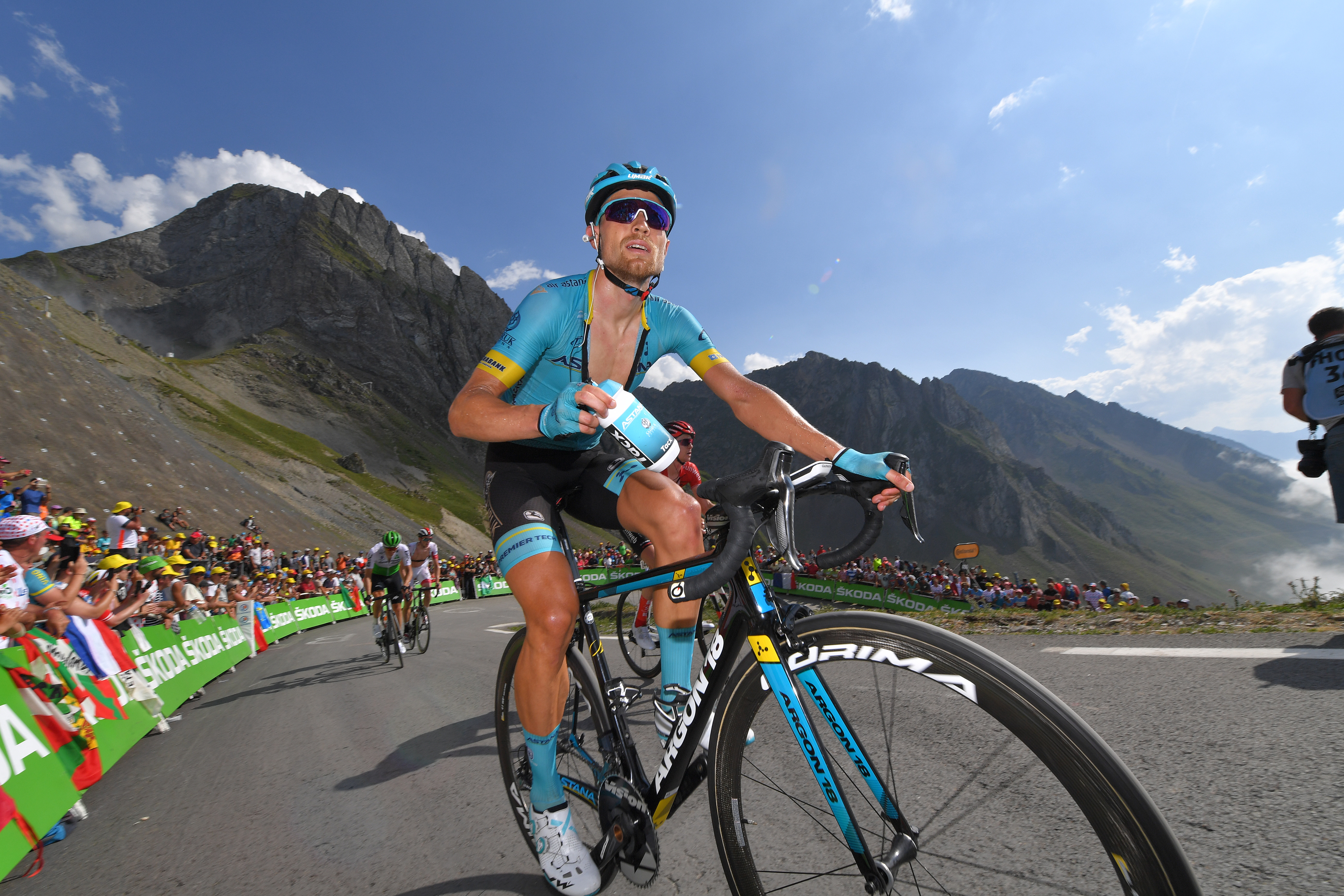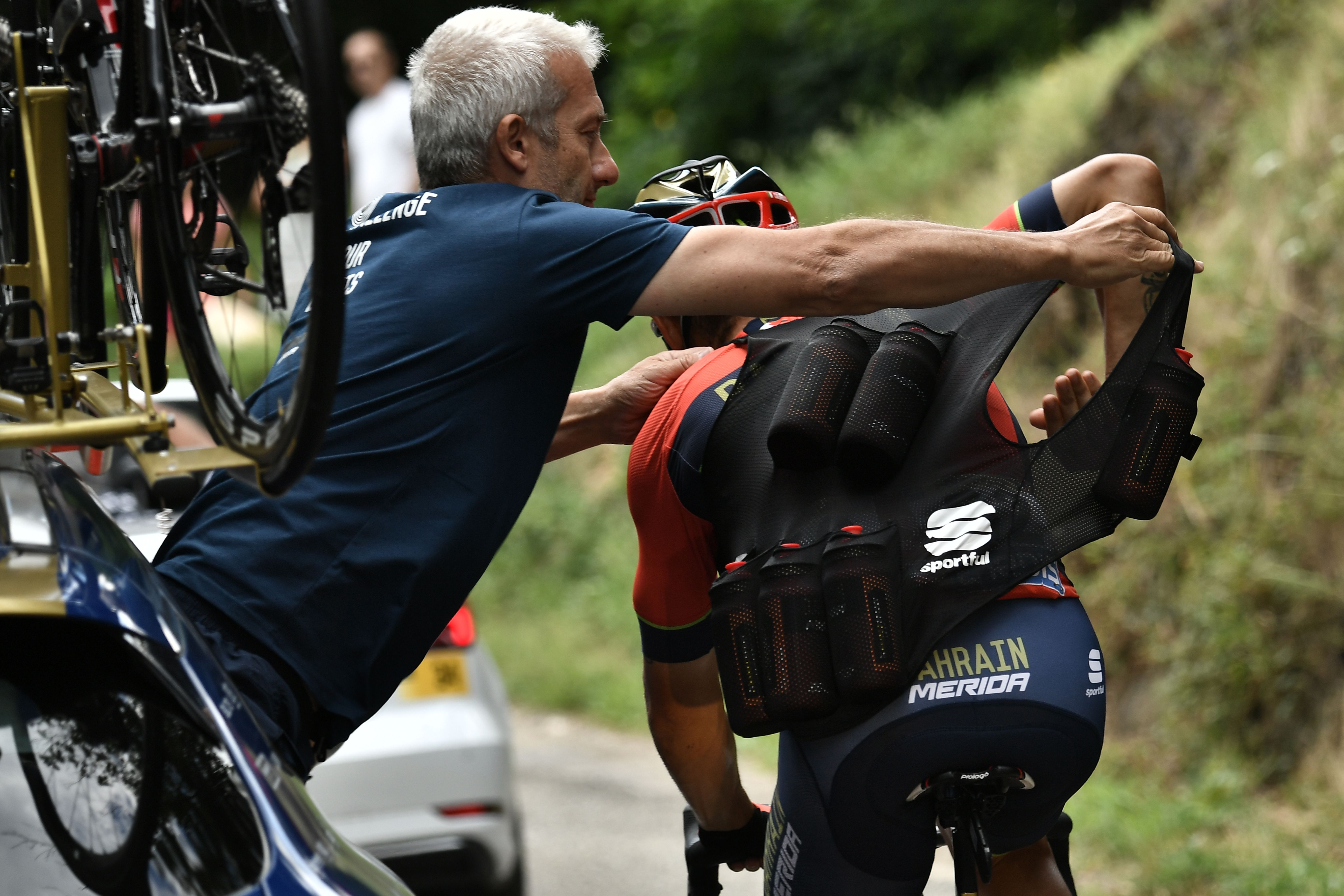When is it too hot to race?
Reaction to heat is individual - but there are some steps we can all take to keep ourselves hydrated


Most cyclists like a bit of sun to top up the tan lines, but right now riders at the Tour de France are ploughing through temperatures in excess of 40ºc -and UK cyclists have up to 35ºc to contend with.
Earlier this year, stages of the Tour Down Under were slashed as riders battled extreme heat. But is there a defining temperature when it's just too hot to race?
Dave Colley, of specialist sports drink company Precision Hydration told us: "Everyone is different, so there isn't a point at which we'd say it's not safe to be racing - you have to find that point for yourself as an individual."
>>> Cycling and cramp: the fact and theory
Precision Hydration provide tailored drinks with varying electrolyte levels to suit different riders' sweat rates, and are now working with Team Sunweb to optimise the squad's intake.
"Riders on pro teams will be racing all over the world in hot climates, and might have access to heat chambers, so they'll be acclimatised to the heat. However, being fitter, they'll have a higher sweat rate - and they'll still be losing the same amount of sodium."
Get The Leadout Newsletter
The latest race content, interviews, features, reviews and expert buying guides, direct to your inbox!
"Potentially, if they are a salty sweater, there's more risk to them if they're not replacing salts adequately."

The pros have soigneurs and domestiques to make sure they get enough bottles - but some need special care.
"We sweat tested Sunweb rider Jan Bakelants two years ago. He's a very heavy sweater, so his net losses over a day were very high.
"He switched over to our 1500 drink, which contains about three times as many electrolytes than the average, and saw a massive difference - he just wasn't touching the sides with weaker electrolyte drinks. He has it before, during and after races now."
When temperatures are high, Colley explains, over-drinking plain water or carbohydrate energy drinks solutions can present issues.
Hyponatremia is a low concentration of sodium in the blood. Some symptoms such as headaches, fatigue and sickness can be mistaken for dehydration, which can be a problem if people then consume more water in response. At worst, the condition can result in brain swelling and death, though of course this is in extreme cases.
"The main thing to be careful with is keeping the ratio of electrolytes and water in balance," Colley says. "When you sweat, you lose water and electrolytes, including sodium. If you pile on a load of plain water, you dilute your blood sodium levels further - and that can lead to hyponatremia."
So plain water is out, but sports drinks are not created equally. Isotonic drinks, containing some carbs, are designed to mimic the concentration of the blood. Hypotonic drinks, with no carbs, are lower in concentration and hypertonic drinks which are high in carbs are higher in concentration.
Hypotonic drinks are best during long rides in the heat - when hydration is a priority - whereas isotonic drinks can be saved for shorter, high intensity efforts where you want energy delivered fast - assuming you start well hydrated.
"When hydration is important, it's best to get your calories from solid food, and then use a hypotonic electrolyte drink - which doesn't contain carbohydrate. This is because hypotonic drinks will absorb faster, so are more efficient as a hydrator.
"When you move to isotonic or hypertonic drinks – absorption will be slower. Sometimes people will ‘add an extra scoop’ in when mixing up an isotonic drink. That can make it hypertonic and just means the gut is trying to absorb the calories as well as the fluids and electrolytes, which slows everything down, and can actually even have dehydrating effect.”
Outside of drinking lots, there's always the good old fashioned bidon shower. Studies have suggested that pouring water over your head can have a positive effect.
"It's likely that it's providing some psychological relief from the feelings of heat stress, even if it’s unlikely that it's actually improving your performance by itself,” Colley says.
He also points out the importance of pacing.
"The guys at the Tour are not going to going off at the same pace as if it was five or six degrees cooler," he explains.
"If you're doing RideLondon and you're expecting it to be 19, 20 degrees and it turns out to be 30 degrees, you shouldn't be flying off at the same pace that you were expecting. It's about knowing your limits, and pacing yourself."
“It’s also worth checking the heat index in the forecast to get an idea of the expected humidity as well as the temperature. Riding in high temperature and humidity is harder than in just high temperatures.
"And bear in mind that when you’re climbing, you're producing more heat and you're riding slower, so there’s less airflow cooling you down – so, if possible, rides with considerable elevation are best avoided in the hottest, most humid conditions.”

Thank you for reading 20 articles this month* Join now for unlimited access
Enjoy your first month for just £1 / $1 / €1
*Read 5 free articles per month without a subscription

Join now for unlimited access
Try first month for just £1 / $1 / €1
Michelle Arthurs-Brennan the Editor of Cycling Weekly website. An NCTJ qualified traditional journalist by trade, Michelle began her career working for local newspapers. She's worked within the cycling industry since 2012, and joined the Cycling Weekly team in 2017, having previously been Editor at Total Women's Cycling. Prior to welcoming her first daughter in 2022, Michelle raced on the road, track, and in time trials, and still rides as much as she can - albeit a fair proportion indoors, for now.
Michelle is on maternity leave from April 2025 until spring 2026.
-
 'This is the marriage venue, no?': how one rider ran the whole gamut of hallucinations in a single race
'This is the marriage venue, no?': how one rider ran the whole gamut of hallucinations in a single raceKabir Rachure's first RAAM was a crazy experience in more ways than one, he tells Cycling Weekly's Going Long podcast
By James Shrubsall
-
 Full Tour of Britain Women route announced, taking place from North Yorkshire to Glasgow
Full Tour of Britain Women route announced, taking place from North Yorkshire to GlasgowBritish Cycling's Women's WorldTour four-stage race will take place in northern England and Scotland
By Tom Thewlis